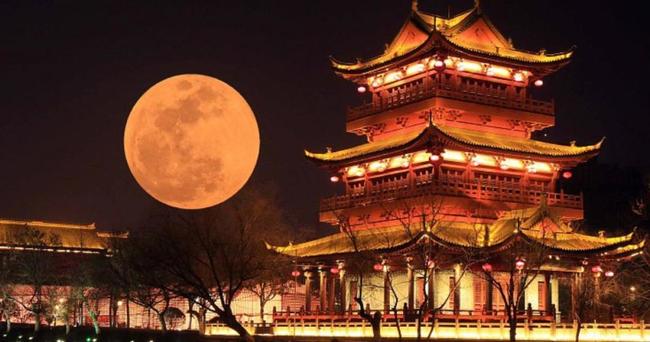Chineses Might Have An Artificial Moon On Their Own By 2020
Author - Oct 21, 2018

An artificial moon is going to be launched in China by 2020. This artificial satellite is eight times brighter than our real moon.
- Mumbai 2020 Power Outage Might Be A China's Cyberattack, India Official Claims
- TikTok China Banned Users From Making Videos To Show Off Wealth
- Entrepreneur Spent 1 Year Building 600-Square-Meter Floating Mansion
According to a report on the state media last Friday, an artificial moon is being planned to be launched by 2020 in China. This is a project developed by Chengdu, a Chinese city located in the southwest of the country’s province Sichuan.
Chengdu wants to create an artificial moon called "illumination satellites" which could shine along with the real moon. However, the important difference between these two moons is that Chengdu’s satellite is promised to shine brighter than the real moon up to eight times.
With its impressive mission, the Chinese artificial moon is aimed at reducing the electricity consuming and replacing streetlamps in urban areas of the country.
Xichang Satellite Launch Center is planning to launch the first man-made moon in China. After successfully launching this satellite, the organization will be in charge of the project to bring the other three new moon into use in 2022.
This was the information which head of the Tian Fu Area Science Society organization Wu Chunfeng shared with the media recently.

Wu announced the city’s project at a conference of entrepreneurship and innovation held on October 10 in Chengdu. Answered in an interview with China Daily, Wu said that the satellites launched later have a great potential of improving civilization life.
The first launch will be the experimentation for Tian Fu to analyze their fabrication, therefore continue to develop those satellites remaining.
Tian Fu’s satellites work as an artificial moon by reflecting the sun’s light. With the strong reflection, the satellite is promised to replace all the lamps located on the streets in urban areas. If this artificial moon reaches the area of illumination of 50 square kilometers, Chengdu city could save nearly 170 million USD every year in costs of electricity.
On the other hand, Wu added that the satellites’ shining will also have the ability to support rescue processes in disaster areas if there is any power outage.
Featured Stories

Features - Jul 01, 2025
What Are The Fastest Passenger Vehicles Ever Created?

Features - Jun 25, 2025
Japan Hydrogen Breakthrough: Scientists Crack the Clean Energy Code with...

ICT News - Jun 25, 2025
AI Intimidation Tactics: CEOs Turn Flawed Technology Into Employee Fear Machine

Review - Jun 25, 2025
Windows 11 Problems: Is Microsoft's "Best" OS Actually Getting Worse?

Features - Jun 22, 2025
Telegram Founder Pavel Durov Plans to Split $14 Billion Fortune Among 106 Children

ICT News - Jun 22, 2025
Neuralink Telepathy Chip Enables Quadriplegic Rob Greiner to Control Games with...

Features - Jun 21, 2025
This Over $100 Bottle Has Nothing But Fresh Air Inside

Features - Jun 18, 2025
Best Mobile VPN Apps for Gaming 2025: Complete Guide

Features - Jun 18, 2025
A Math Formula Tells Us How Long Everything Will Live

Features - Jun 16, 2025
Comments
Sort by Newest | Popular